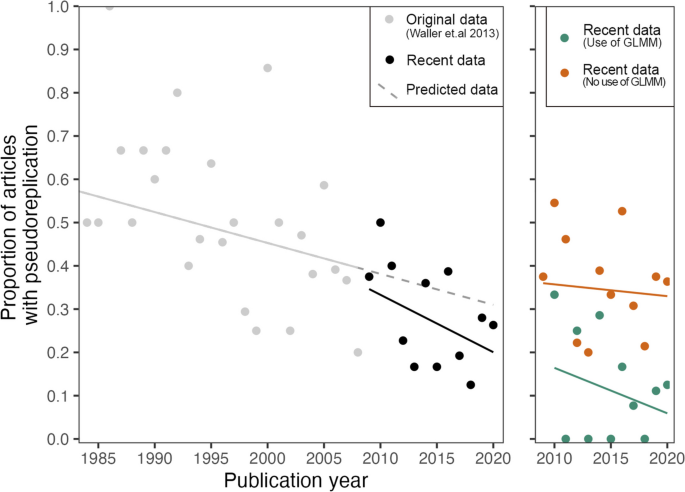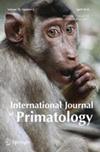灵长类动物交流研究中的伪复制:10年
IF 1.8
3区 生物学
Q1 ZOOLOGY
引用次数: 0
摘要
伪复制是指从单个单位(如个体)收集大量不独立的数据点,并采用假设数据独立的统计方法所产生的统计误差。重要的是,伪复制增加了类型1错误(即假阳性)的机会,使基于伪复制分析的发现和结论受到质疑。十年前,Waller等人(2013)发表了一篇论文,强调了非人类灵长类动物交流文献中统计伪复制的普遍性。在当前的研究中,我们检查了自原始发表以来发表的文献(2009年至2020年;348篇论文)来评估伪复制是否仍然像以前一样普遍,是否已经变得更加成问题,或者该领域是否开始克服这个问题。我们发现,在过去十年中,伪复制的发生率显著下降(当时为38.6%,而现在为23.0%)。这种伪复制的减少似乎与灵长类动物学中多层模型的使用增加有关(多层模型允许适当地嵌套非独立数据)。历史上,在使用观察(与实验)方法的研究以及使用野生(与圈养)灵长类动物的研究中,假复制更为普遍。然而,这些偏差似乎不存在于更近期的文献中,无论采用何种方法,在整个领域都可以看到更具可比性的伪复制可能性。虽然这些目前的发现只涉及灵长类动物的交流研究,但我们认为它们将广泛地应用于非人类的交流研究,以及整个生物学。我们继续强调监测这些问题的必要性,因为尽管现在看到的假复制率大大降低,但仍然存在,因此可能影响研究结果的准确性。本文章由计算机程序翻译,如有差异,请以英文原文为准。

Pseudoreplication in Primate Communication Research: 10 Years On
Abstract Pseudoreplication is the statistical error of collecting numerous datapoints from a single unit (such as an individual), which are not independent, and applying statistical methods that assume independence of data. Importantly, pseudoreplication increases the chances of Type 1 errors (i.e., false positives), bringing findings and conclusions based on pseudoreplicated analyses into question. Ten years ago, Waller et al. (2013) published a paper highlighting the prevalence of statistical pseudoreplication throughout the nonhuman primate communication literature. In this current study, we examined the literature published since the original publication (between 2009 and 2020; 348 papers) to assess whether pseudoreplication is still as widespread as it was, if it has become more problematic, or if the field is beginning to overcome this issue. We find that there has been a significant decrease in pseudoreplication over the past ten years (38.6% then, compared with 23.0% now). This reduction in pseudoreplication appears to be associated with an increase in the use of multilevel models throughout primatology (which allow for nonindependent data to be nested appropriately). Pseudoreplication was historically more prevalent in research using observational (vs. experimental) methods and those working with wild (vs. captive) primates. However, these biases do not seem to exist in more recent literature with a more comparable likelihood of pseudoreplication seen across the field regardless of methods. Although these current findings relate specifically to primate communication research, we think they will translate broadly across nonhuman communication research, and throughout biology. We continue to emphasise the need to monitor these issues, as although now seen at much lower rates, pseudoreplication is still present and therefore potentially impacting the accuracy of findings.
求助全文
通过发布文献求助,成功后即可免费获取论文全文。
去求助
来源期刊
CiteScore
4.10
自引率
16.00%
发文量
68
审稿时长
6-12 weeks
期刊介绍:
The International Journal of Primatology is a multidisciplinary forum devoted to the dissemination of current research in fundamental primatology. Publishing peer-reviewed, high-quality original articles which feature primates, the journal gathers laboratory and field studies from such diverse disciplines as anthropology, anatomy, ecology, ethology, paleontology, psychology, sociology, and zoology.

 求助内容:
求助内容: 应助结果提醒方式:
应助结果提醒方式:


